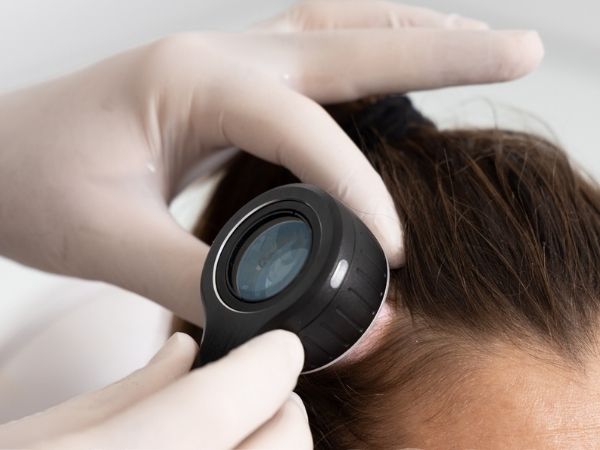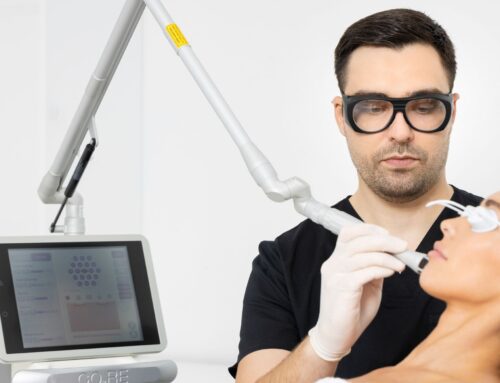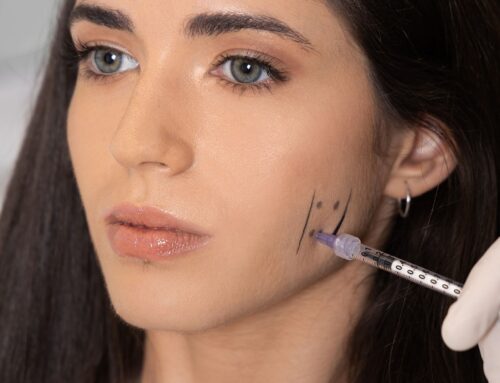Hair loss is a big problem that more and more women and men are facing today. Thinning hair, its rapid decline and the appearance of baldness are clear signs that we need to do something. Any loss of hair in excess of what is considered normal is called alopecia.
There are numerous causes that can lead to this condition. Apart from being an aesthetic problem, hair loss can also be a symptom of numerous health problems. That is why it is important to know when to react and seek help as soon as the first symptoms appear.

Hair loss
Daily shedding of hair is a completely natural process. Hair grows, falls, is replaced by new ones, and it is normal to lose between 50 and 100 hairs every day. Hair growth happens in stages. These are anagen, catagen and the resting phase, the so-called telogen phase. After the end of the resting phase, the hair falls out, and a new hair grows in the follicle.
With age and aging, it is natural for hair to thin. Unfortunately, premature hair loss affects younger people more and more often. In younger women, the cause of sudden hair loss is usually stress and hormonal imbalance, while in men, baldness and the appearance of sideburns are most often caused by genetics.
What are the causes of hair loss?
Genetic predispositions
Genetics and family history are the most common causes of hair loss. Here we are talking about a hereditary condition that appears along with aging. Professionally, this type of hair loss is called androgenic alopecia , that is, male pattern baldness and female pattern baldness. It appears gradually and according to a clearly predictable pattern. In men, it is receding along the hairline, the appearance of so-called sideburns. In women, there is a sudden loss of hair, its thinning.
Hormones
Hormonal imbalance , most often due to pregnancy, after childbirth or during menopause, can cause sudden hair loss and thinning in women. It can be temporary or permanent. Also, problems with the thyroid gland can often lead to hormonal changes, which can cause hair loss. That is why it is important to check thyroid hormones on time and consult with an endocrinologist who will determine adequate therapy.
Infections
Various scalp and scalp infections, such as fungal infections professionally called tinea capitis , can cause hair loss. This condition often appears in children before the onset of puberty. It appears extremely rarely in adults and in the case of a weak immune system – immunosuppression. Also, other various infections, such as sexually transmitted diseases such as syphilis can also be a marker of the disease.
Stress, lack of vitamins and minerals
Stress, whether mental or physical, certain body traumas, lack of key vitamins, such as B12, as well as minerals, such as zinc and iron, can easily lead to alopecia areata. This is a very common medical condition that is directly related to the immune system and causes abnormal decline. It is recognized by the loss of hair in patches, it usually appears suddenly and is very progressive.
Other causes
Dehydration of the body, lack of protein, biotin, as well as too much vitamin A, can cause thinning and hair loss.
Taking certain medications and supplements, such as those used for cancer, arthritis, depression, heart problems, gout, and high blood pressure, can cause hair loss.
Chemotherapy and radiotherapy can also be a cause.
Excessive hair styling, hairstyles that tighten the hair, dyeing, ironing can all lead to thinning, breakage and sudden hair loss.
Hair loss – when is it time to worry?
- Polycystic ovary syndrome (PCOS), asthma, vitiligo, diabetes, the autoimmune disease lupus, can cause hair loss.
- Hair loss after corona treatment is a very common phenomenon, due to the weakened immunity of patients.
- Cicatricial alopecia can be a consequence of the mentioned lupus, but also of other health conditions. Symptoms of this type of alopecia are hair loss, which is usually accompanied by redness of the scalp and destruction of the scalp. This condition requires detailed analysis and treatment by a dermatologist.
- Trichotillomania or hair pulling disorder appears more often in women than in men, and in children more than in adults. It is about self-initiated pulling or breaking of hair, which is related to psychological stress or personality disorder. The disease most often appears in early childhood to adolescence.
How to recognize hair loss in time?
The main symptom of alopecia is hair loss, but the loss of other body hair, such as eyebrow, eyelash or facial hair, can also occur. The first symptoms of alopecia usually appear before the age of 30. years of life and hair loss is more common in autumn and winter. Alopecia can be focal or diffuse.
Focal alopecia is characterized by minor hair loss on a certain part of the body, most often it is hair loss.
Diffuse alopecia is caused by a disturbance in the evolution of the hair life cycle. In this case, the hairs suddenly go into the shedding phase. Thinning of hair and its sudden loss appears. For some, it may be barely noticeable, and for other people, hair may fall out in strands.
The most important thing is not to leave the problem of hair loss to chance, but to react in time, discover the cause and find adequate therapy. Otherwise, permanent hair loss and premature balding may occur.

Hair loss in women
In women, hair loss is most often caused by excessive stress, hormonal imbalance, but also genetic predispositions. Hair loss in women is in most cases diffuse type. It rarely affects the lateral and occipital areas of the head.
When establishing the diagnosis, it is necessary to check the complete blood count, iron, thyroid hormones and enzyme status, due to possible increased androgen hormones. Also, the diagnosis includes tests that can indicate other health disorders.
Hair loss in men
The problem of hair loss affects more than 50% of the male population, older than 40 years. Most often, it is about androgenetic alopecia, that is, male pattern hair loss. Hair falls and thins most often in the frontal, parietal area and on the crown of the head.
Androgenic alopecia in men is caused by the effect of dihydrotestosterone (DHT) on hair follicles. This has the effect of reducing the anagen phase of hair growth, causing the follicles to shrink and eventually disappear.
Hair loss – establishing a diagnosis
Finding the cause and establishing an adequate diagnosis are the basis for finding an effective treatment against hair loss. It is important to present to the doctor all the important factors that could lead to hair loss, to present the family history, anamnesis, whether the patient has suffered certain traumas, stress. All of these can be key to making a diagnosis and getting the right treatment.
A dermatologist can recognize alopecia by examining the top of the head, as well as by looking at a few hairs under a microscope. If necessary, a scalp biopsy can be done to rule out other possible causes of hair loss. Also, a complete blood count, hormone status, and other tests are necessary to determine the true cause of hair loss.
treatments
The approach to each patient is individual, and therapy and methods of hair loss treatment are determined based on the cause and confirmed diagnosis.
In the case when hair loss is caused by a certain infection, such as fungi, syphilis, adequate treatment of the infection is the first and most important step to recovery. If it is a case of cicatricial alopecia, adequate analyzes and therapy are needed to stop the process of scalp inflammation and hair loss. Treatment of trichotillomania, that is, hair pulling, will include a conversation with a psychologist, as well as medication for associated psychiatric components.
When alopecia areata is confirmed, treatment will depend on the degree of hair loss involved. That is, whether only the scalp or the whole body is affected. The first therapy can be the local application of corticosteroid ointments. The last type of therapy is systemic therapy, ie. medicines that are taken in the form of tablets or intravenous therapy.
Treatment of androgenetic alopecia in men and women includes several options. These can be drugs such as minoxidil , which is applied to the scalp usually once or twice a day. Minoxidil can stimulate hair growth and prevent further hair loss, and is most helpful in the early stages of hair loss. This drug tends to be more effective when used in conjunction with other hair loss treatments such as PRP and mesotherapy.
And here we come to the treatments that have proven to be the most effective in treating hair loss. In our practice, we apply them with great success.
Modern aesthetic medicine has produced several very effective solutions that prevent hair loss, stimulate hair growth and lead to hair regrowth. The most effective among them are PRP treatment and mesotherapy.
Hair mesotherapy
Hair mesotherapy involves injecting cocktails rich in minerals, vitamins, antioxidants and growth factors. It is a completely safe and almost painless procedure, indispensable when solving problems related to hair loss, but also when it is necessary to strengthen and thicken the hair. This non-surgical method will strengthen the hair root, hydrate and nourish the scalp. In this way, it slows down or stops hair loss and effectively stimulates the growth of new hairs.
What do you need to know about the treatment?
After the examination and discussion with the doctor, it is determined whether hair mesotherapy is the best solution in a particular case. The doctor then creates a treatment plan to achieve optimal results. They carefully determine which mesococktails will be used, depending on gender, age, and the problem that exists. The procedure itself is simple. Mesotherapy cocktails are injected directly into the scalp with thin needles. The treatment lasts up to 30 minutes. There is no recovery period, the patient immediately returns to his duties.
The number of required treatments depends on the problem we are treating, the quality of the hair itself and the treated surface. The first results of hair mesotherapy are visible already after a month, and the treatments are done at intervals of about three weeks.
You can learn more about hair mesotherapy by clicking on the link.

PRP hair treatment
PRP hair treatment is a modern regenerative method that uses blood plasma rich in platelets and growth factors to stimulate cell renewal, stimulate the hair follicle and encourage new hair growth.
PRP is an abbreviation of Platelet rich plasma , which means blood plasma rich in platelets. Blood platelets are full of growth factors and bioactive proteins. By injecting such blood plasma into the patient’s scalp, new blood vessels are created, hair follicles are stimulated to grow, and damaged scalp tissue is regenerated.
The best candidates for this method are people in the early or middle phase of hair loss, that is, with initially or moderately thinning hair. PRP hair is very helpful in the case of hair loss in seals, when it is necessary to accelerate hair growth and restore the scalp.
What do you need to know about the treatment?
It is a completely natural method, minimally invasive, and the possibility of allergies and adverse reactions is minimal. The procedure is simple, and it begins by first taking a little blood from the patient’s vein. The blood is then centrifuged and platelets are separated from it, which release growth factors. In such blood plasma, the concentration of platelets is three to five times higher than in whole blood. This blood serum is injected with thin needles into the patient’s scalp, in the areas where hair growth needs to be increased.
Over the next 7 to 10 days, the platelets begin to release growth factors. Regeneration of hair, hydration of the scalp and improvement of circulation occur.
Experience has shown that results are obtained after a series of three treatments. There is a gap of one month between each treatment. According to research, patients with hereditary hair loss can use PRP treatment to prevent hair loss and stimulate hair growth.
You can read all about PRP hair here.
What to choose: mesotherapy or PRP hair?
Both methods will give excellent results in the fight against hair loss, strengthening the hair and improving the quality of the hair. They can be combined or applied independently. Mesococktails rich in biotin, antioxidants and other active substances will make the hair thicker, lusher and stronger.
PRP hair treatment is a safe way to fight hair loss, encourage faster growth, and restore scalp tissue. We achieve the best results when we start treatment in the early stages of hair loss. Then the success rate is up to 80%.
How to prevent hair loss?
Here are some tips that are sure to be of great help when we want to prevent hair loss.
- Drink enough water, about 2 l per day. Hydration of the body is very important for beautiful and healthy looking hair.
- Enrich your diet with vitamins B and C, eat foods rich in iron, zinc, and proteins.
- Try to be less nervous, learn to channel stress properly.
- Choose hair products that do not contain artificial substances, sulfates, parabens. Opt for more natural variants.
- If you dye your hair, opt for natural dyes that do not have a high percentage of ammonia.
- Massage the scalp for a few minutes each time you wash your hair. In this way, you will improve the circulation of the scalp and strengthen the hair roots.
- Do not brush your hair while it is wet.
- Tying your hair in a ponytail every day will weaken the circulation of the scalp and therefore the hair will fall out faster. Let the hair down as much as possible.
prices and additional questions
If you have a problem with hair loss, you can check the prices of PRP and metotherapy on the Pricelist page. If you have additional questions regarding the treatment, call us at 060/345-0304 or write to us at estetikabgd@gmail.com.




